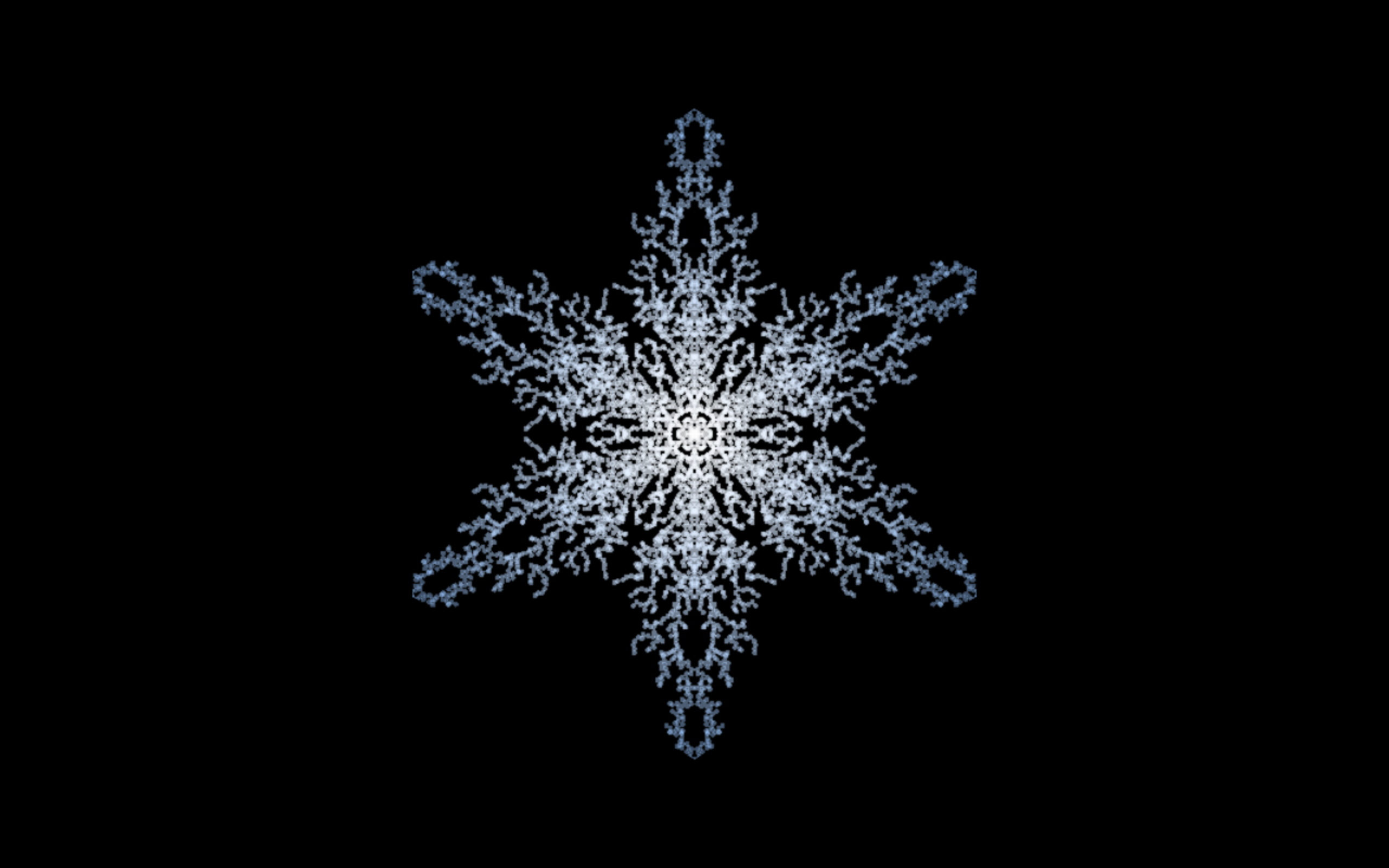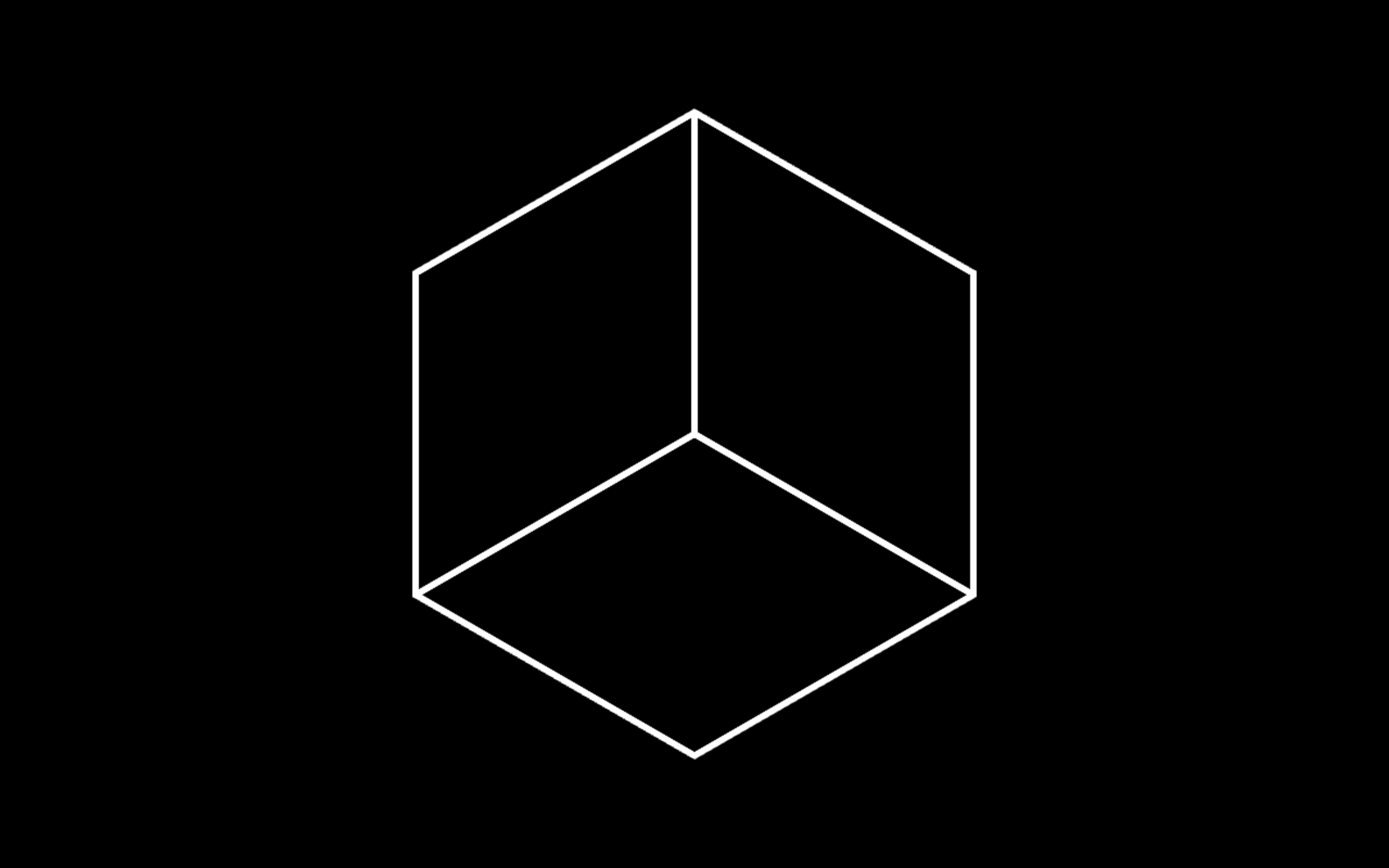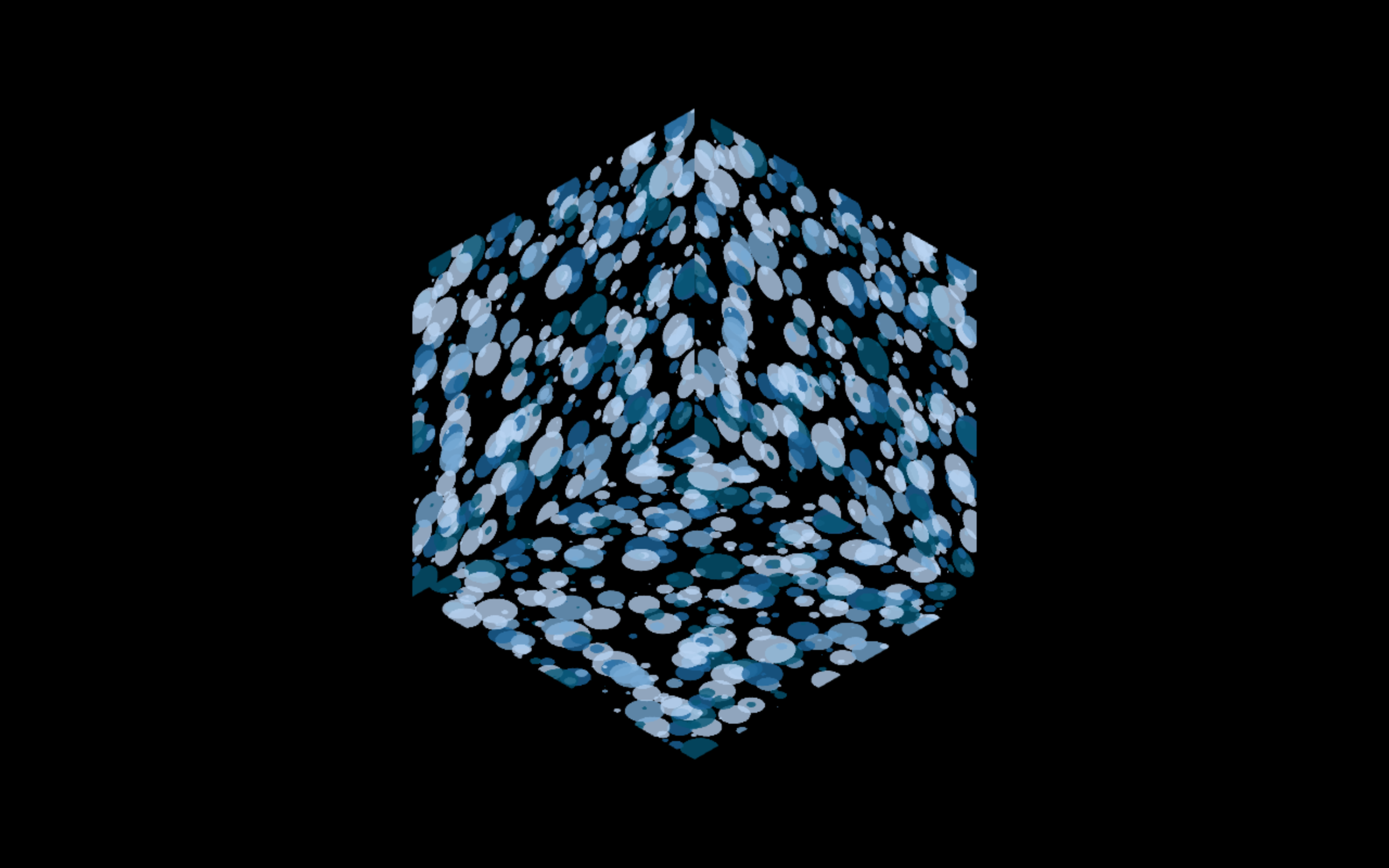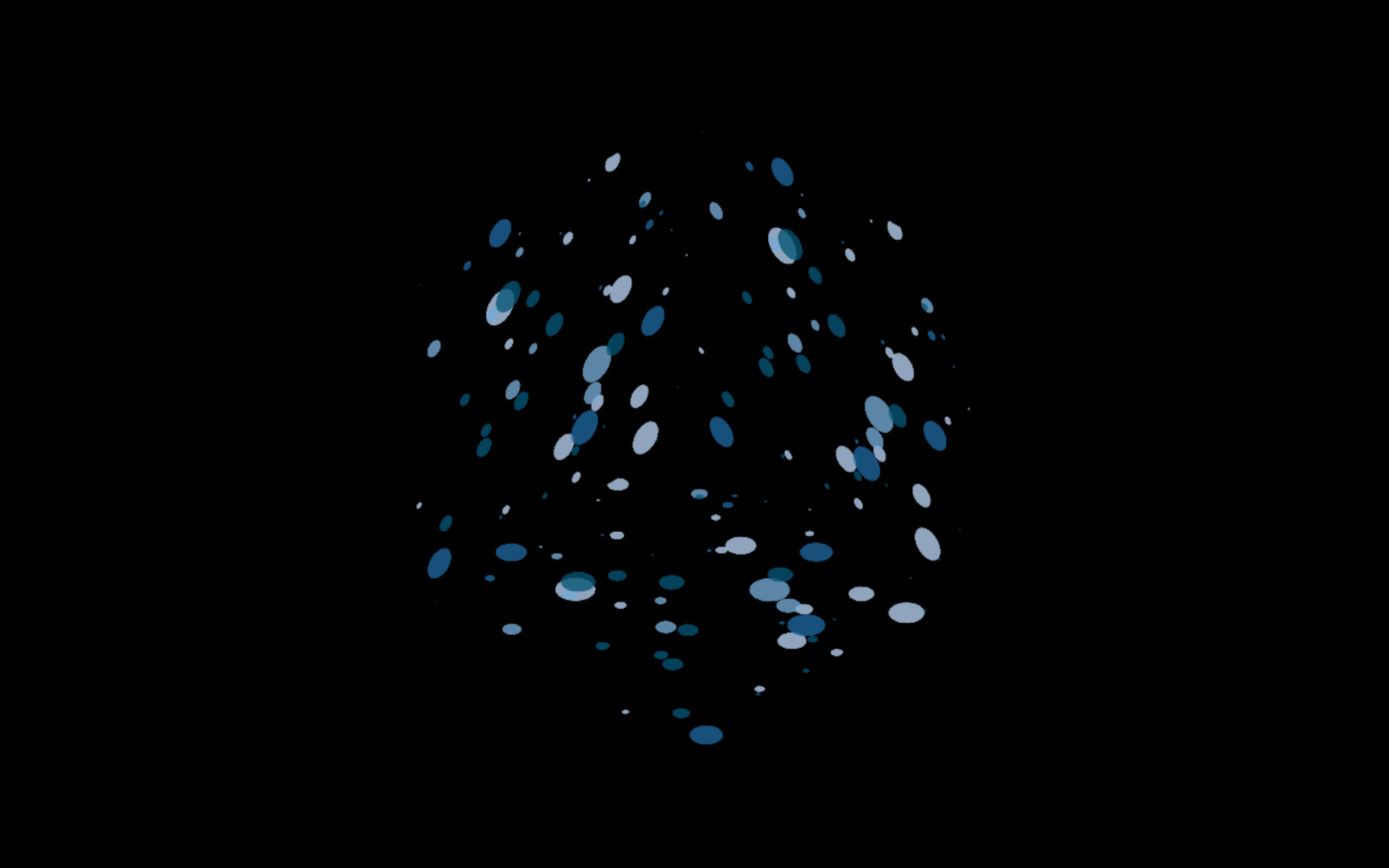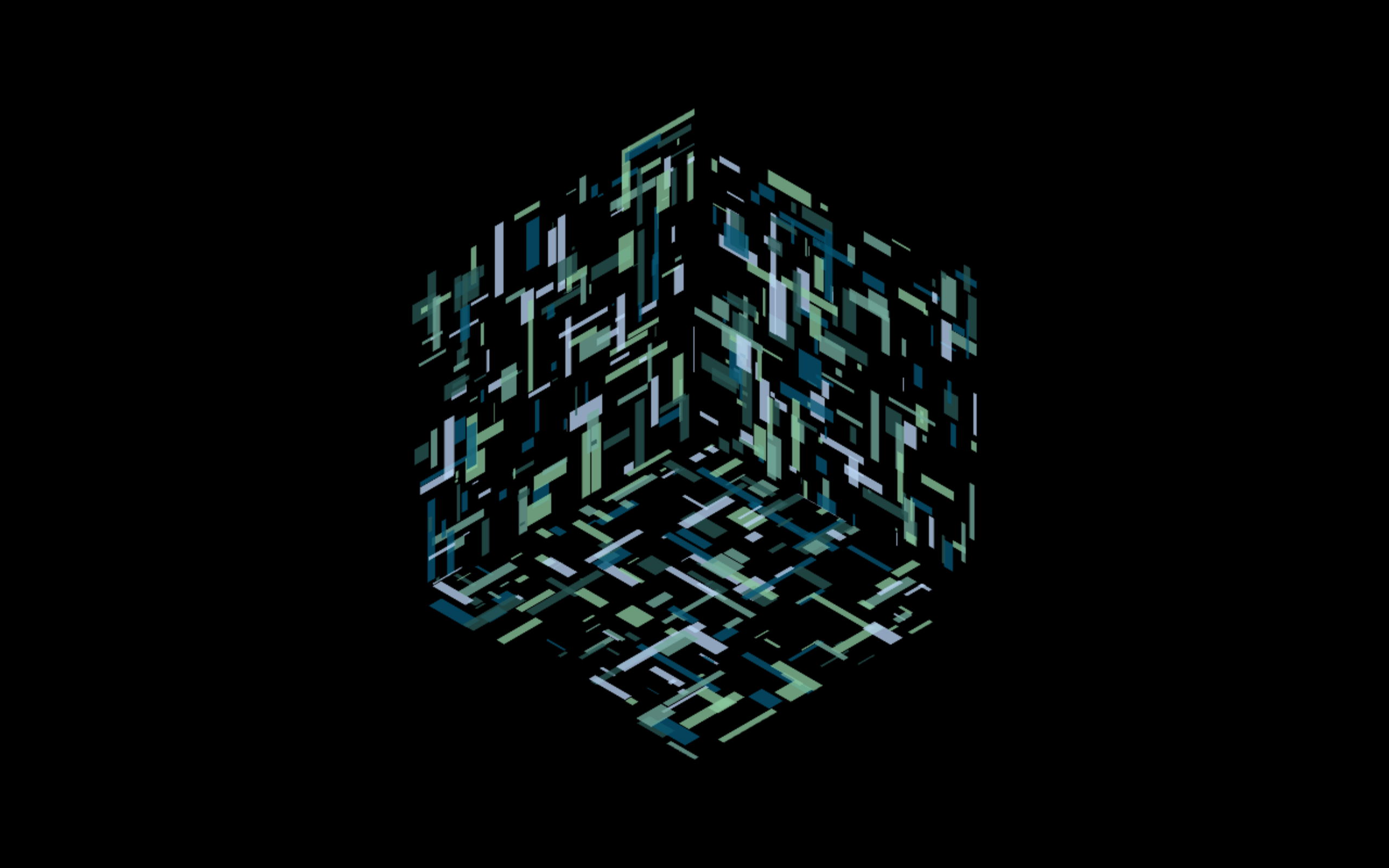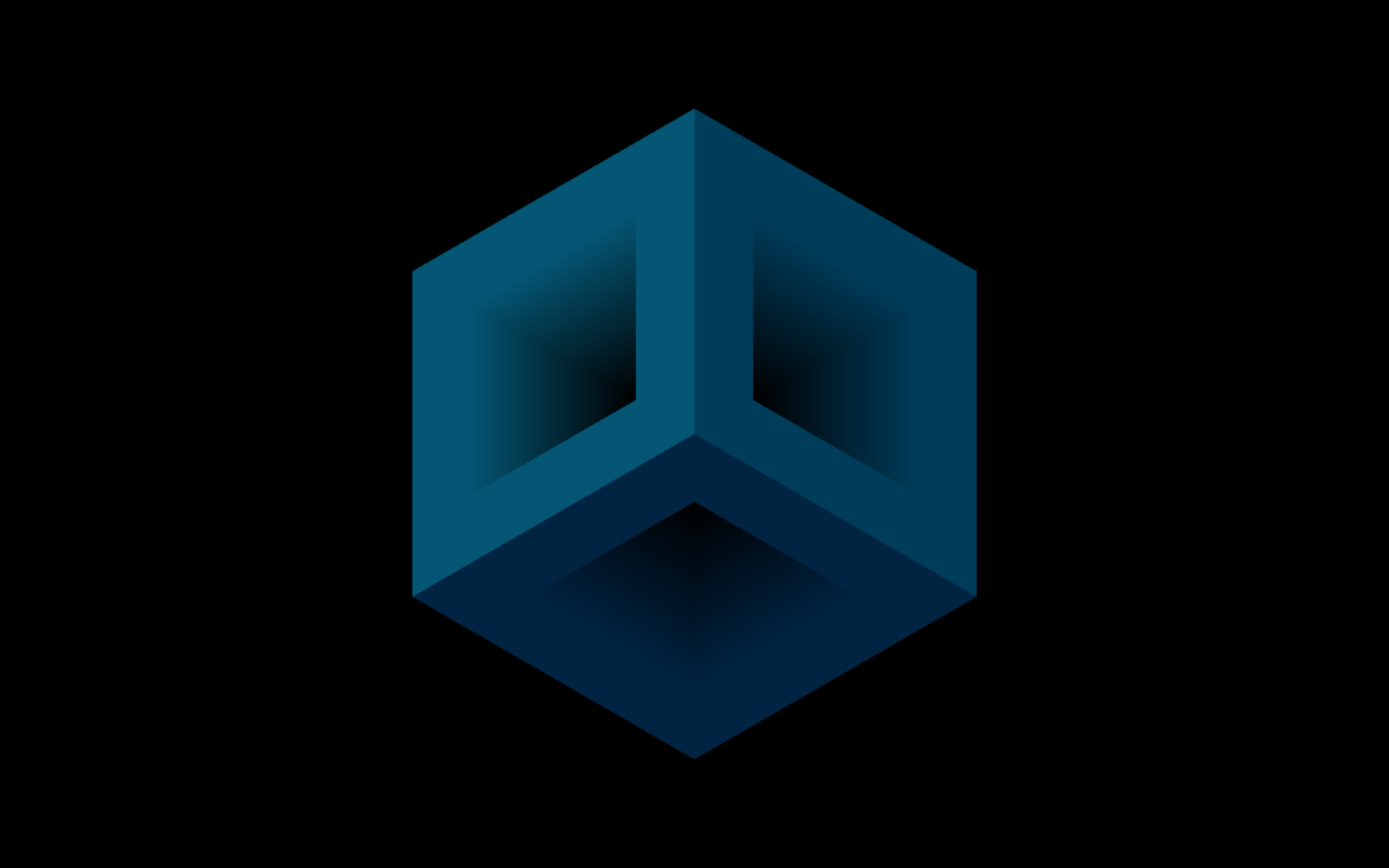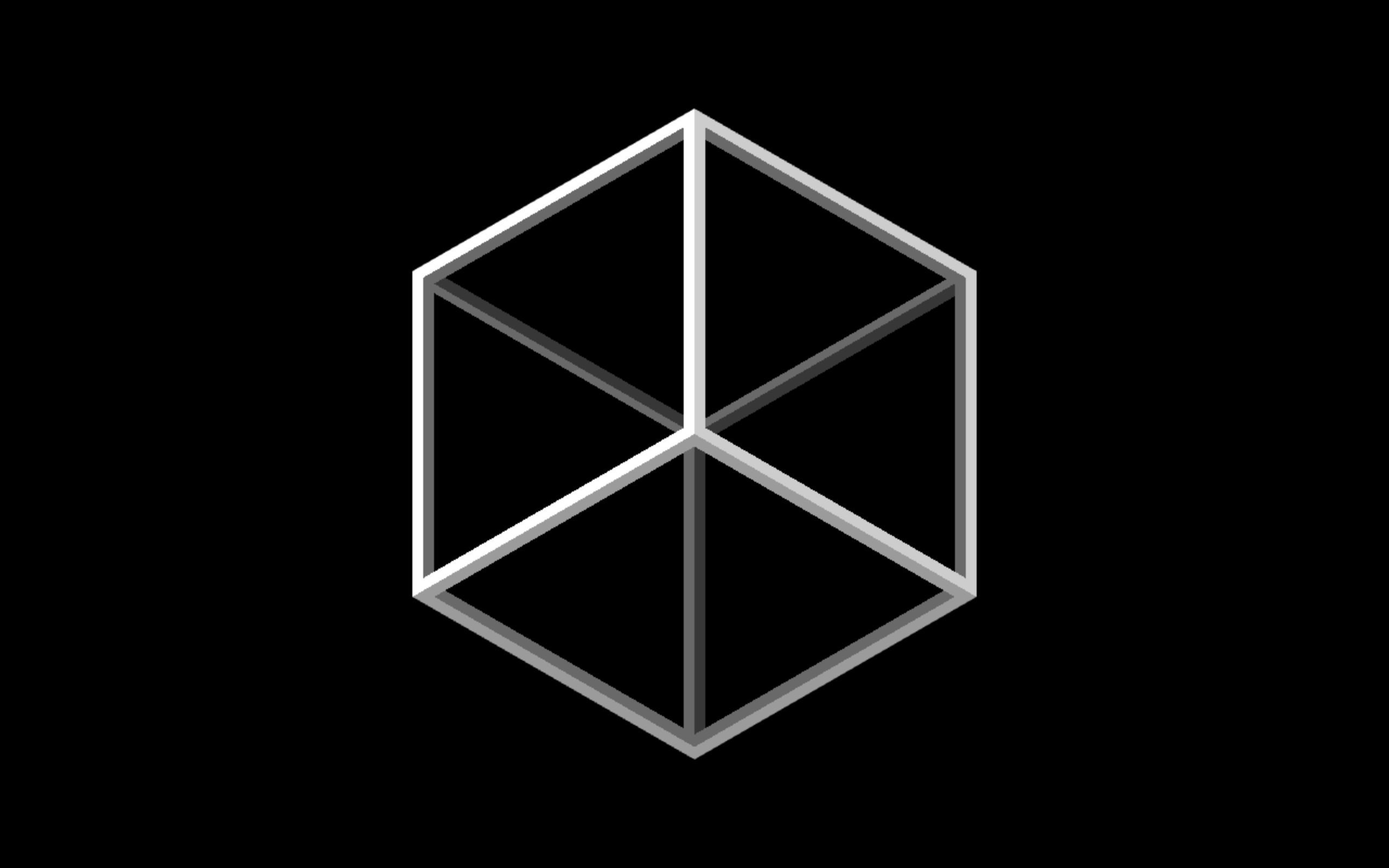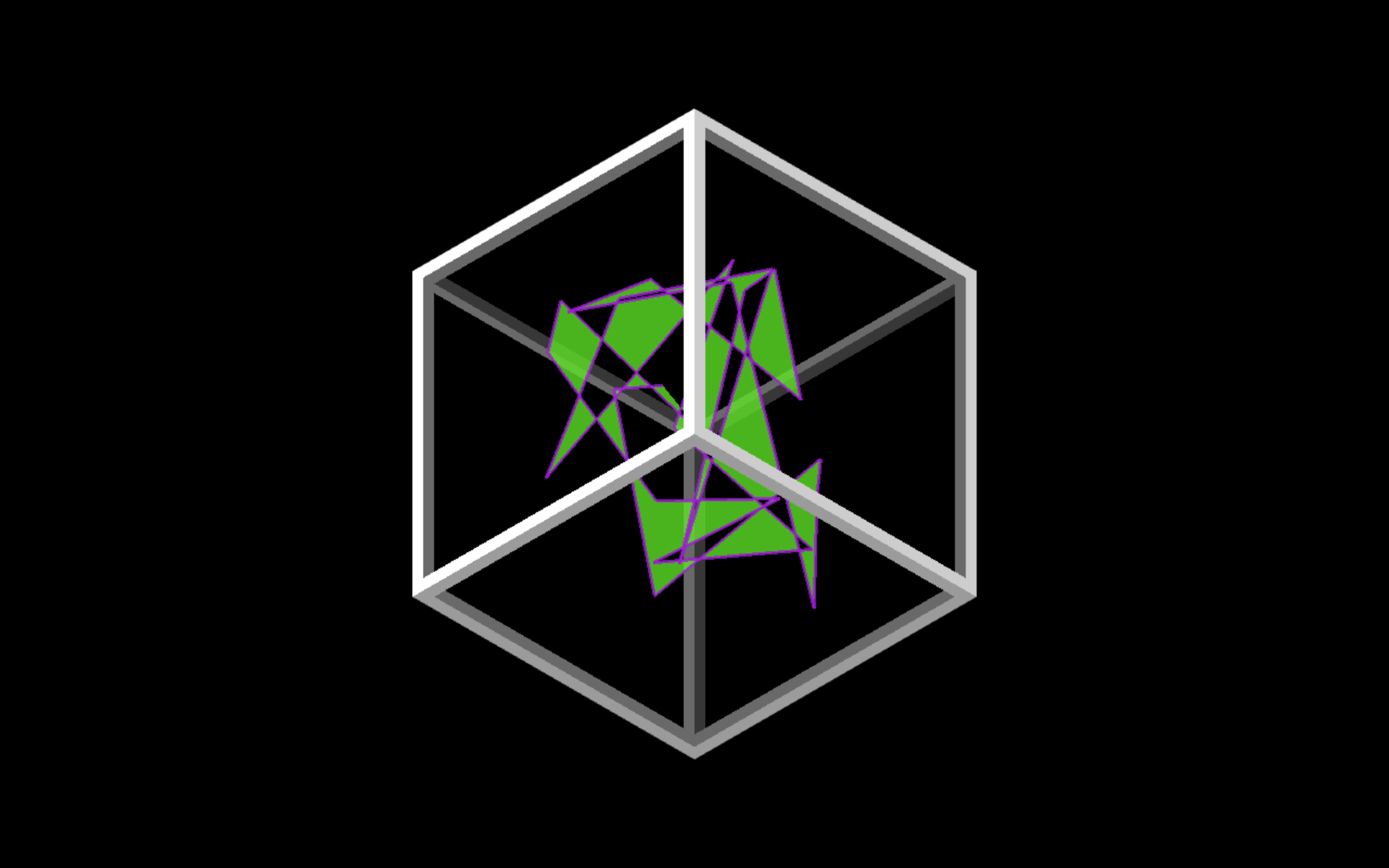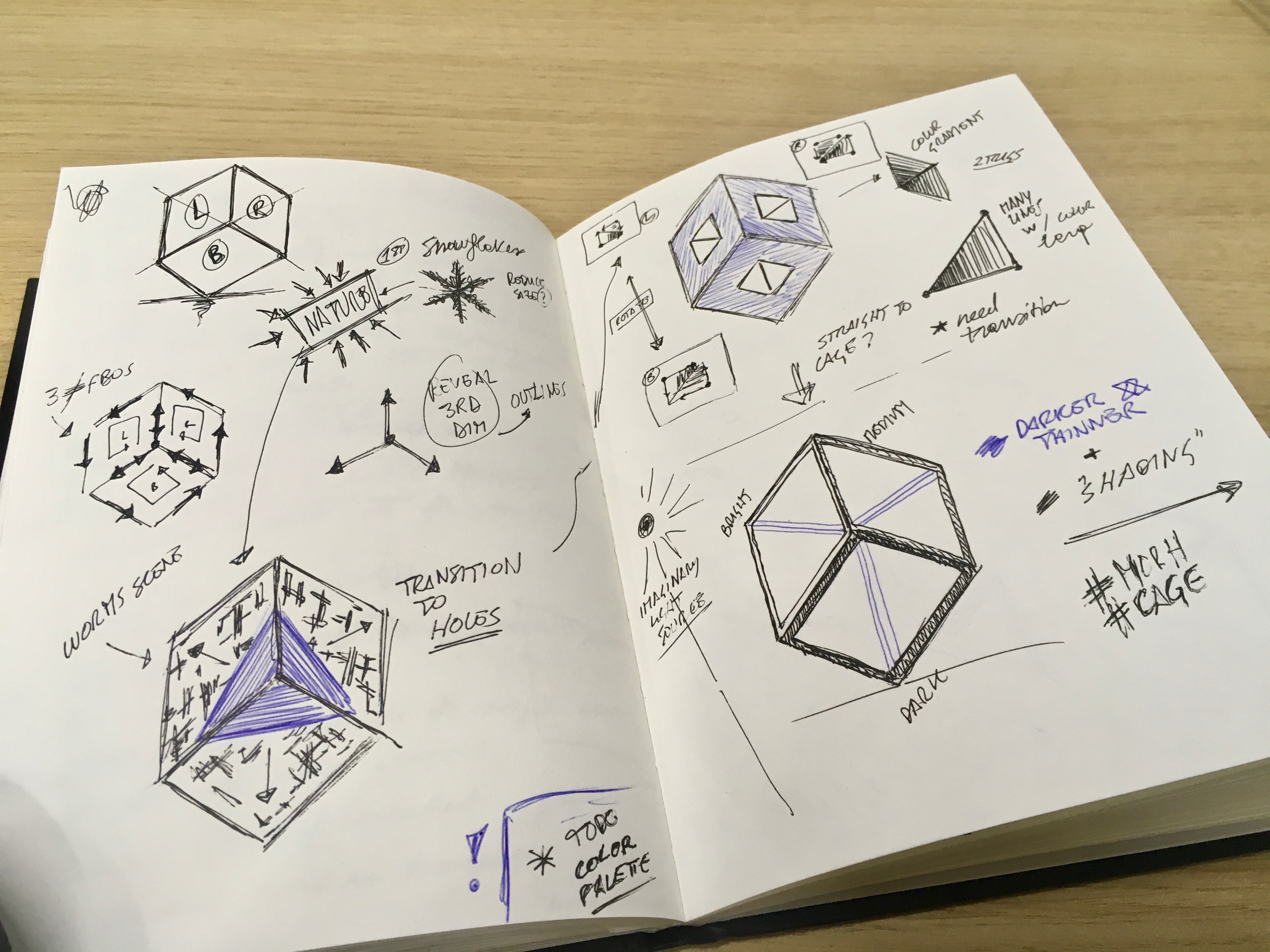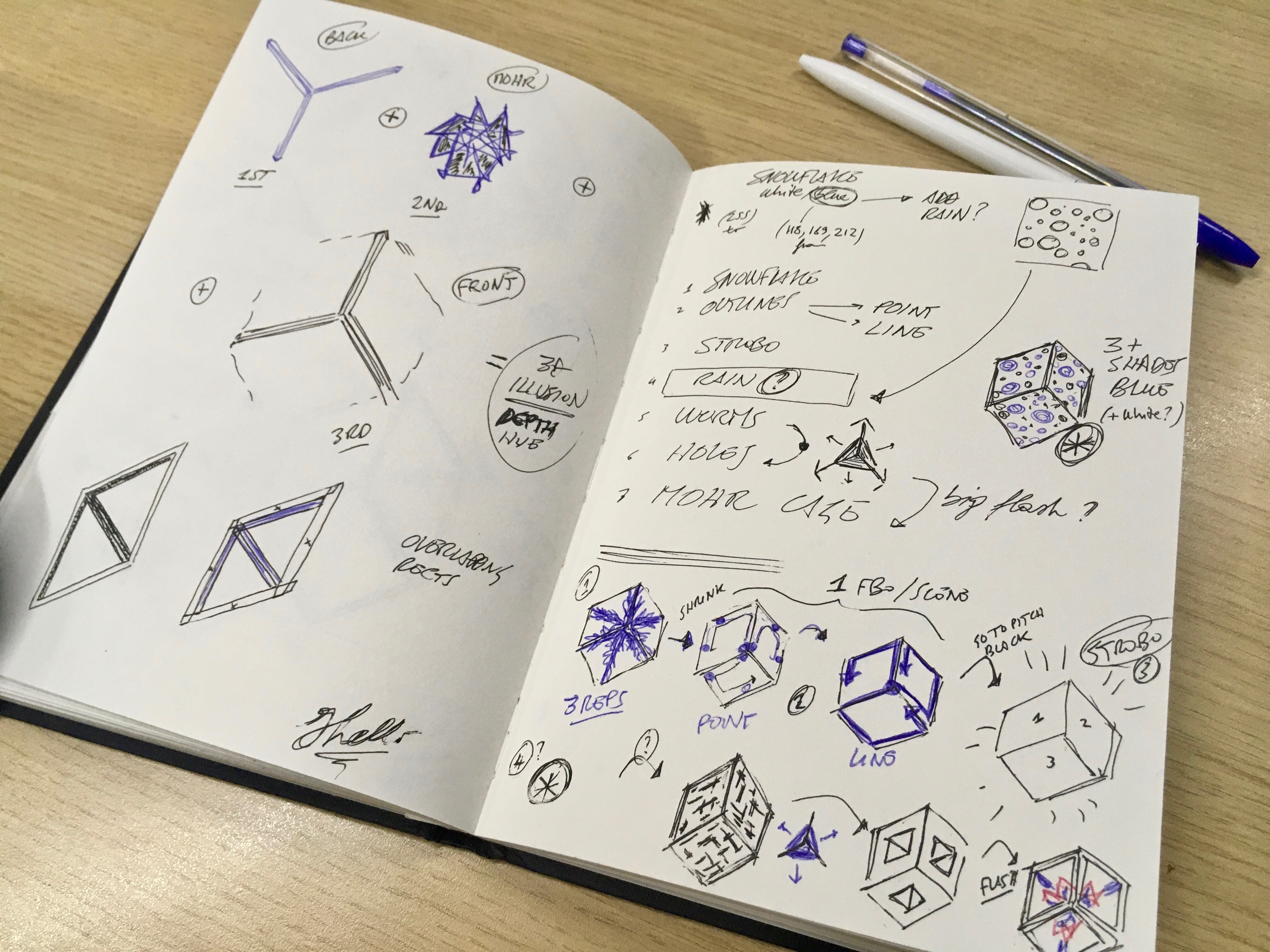Dual Nature
'Dual Nature' is a projection-mapped piece that aims to highlight the duality and ephemerality of nature and to encourage reflection on our destructive impact on it.
produced by: Mattia Spagnuolo
Concept and background research
The duality of the shape I chose to project on allowed for a visual expression of the concept I intended to work with. If looked at from the front, the outline of a tilted cube laying on one of its corners is a regular hexagon. This quality called for some hexagonal shapes or structures that I could take advantage of to conceal the tridimensionality of the cube. As nature contains multiple geometrical shapes, I opted to use the generation of various snowflakes as my first scene. I decided to start with a full and complex snowflake that, iteration after iteration, becomes thinner and thinner to bring out the edges of the cube laying underneath.
After seeing my first scene, I realised that by becoming thinner not only did the snowflakes emphasise the hexagon-cube duality, but also the ephemerality of nature. I am interested in engaging with the problematics of preservation of nature as well as of the human impact on it, therefore I included these themes in my work. Flashes, raindrops and worm-like creatures are displayed in vibrant colors to signify the powerful beauty of nature. As time goes by, however, they fade away, they're wiped away to give space to man-built structures.
The last two scenes - one displaying a rock-hard object that neither sunshine can escape, and the other a cage that constrains a lively colourful creature that moves within it, but never breaks free - are meant to encourage the audience to reflect on the human imprint on nature, on how we often forget of its beauty and with it, of the implications of our actions.
Technical
This projection-mapped work was developed in OpenFrameworks with the use of the ofxPimapper add-on. Each scene was first implemented individually and only later incorporated in the project as a separate FBO source to allow for more modularity.
In the prototyping phase, I drew my scenes on a hexagonal reference, so that I could visualize the final output. It turned out to be an effective solution as no changes were needed during the physical mapping.
One of the major challenges in making this piece was to keep a flowing and consistent narrative. Many of the ideas I've first sketched on paper were later discarded because, once integrated with the rest of the project, they did not seamlessly blend in. Variety needs to be introduced to keep the audience engaged with the piece, but it is essential to maintain a continuity that could be otherwise lost with the introduction of an excess of elements. This was a lesson that I've learned the hard way.
Finally, I took on the challenge to create 3D shapes and forms by only using 2D primitives (assignment's restrictions). This 3D effect, particularly evident in the very last two scenes, was achieved by properly using shading and color gradients.
Future development
One natural extension to the project is the introduction of a tailored soundtrack to go along with the visual imagery. Natural sound textures that match what's being projected would allow for a more immersive and meaningful experience of the piece.
Self evaluation
Overall, I am satisfied with the final output of my project. The objective to exploit the duality of the shape I chose to project on was achieved and with it, the definition of a consistent narrative that would keep the audience entertained.
Room for improvement can be found in the color palette of the piece. Through a more attentive choice of colors and of their development throughout the piece, a stronger continuity can be established.
On a more practical level, there have been some smaller miscalculations during the making of the cube and the mapping phase that resulted in a slightly imperfect correspondence between the cube and the projected shapes in some scenes.
References
My main reference was the natural world. I have looked into its shapes, colors and motion and adapted them to fit both my narrative and the shape they would be projected on.
The idea of projecting on a tilted cube comes from Ouchhh's DATA GATE installation, which can be found here.
My inspiration and reference for the very first scene was Daniel Shiffman's Brownian Motion Snowflake implementation, which can be found here.
Manfred Mohr's work was inspirational for the making of the creature that is trapped inside the cage during the last scene.
The soundtrack 'Deep Blue' was downloaded from the royalty free music website 'Bensound'.
































































